INDEX
- AM vs FM
- AM
- FM
- VHF Airband
- Marine Band
- Weather Radio
- Satellite Tracking
- Satellite Reception
AM VS FM
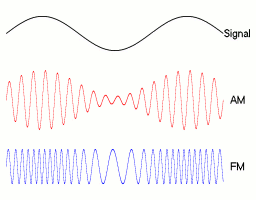
As illustrated above, in AM, the amplitude of the carrier signal is modulated by the waveform of the transmitted signal. In FM, the carrier frequency shifts back and forth around its central frequency.
This means an AM radio station uses a very narrow spectrum band, allowing many stations to be placed close together with minimal spacing. In contrast, FM requires a wider bandwidth around the center frequency. Essentially, up to 20 AM channels can fit within the bandwidth of a single FM channel.
Another important factor is frequency. AM stations transmit at lower frequencies, allowing their signals to travel farther than FM. However, this comes at the expense of audio quality. AM is more suitable for voice, while FM is ideal for music.
A loop (aka “donut”) antenna is a particularly popular antenna for tuning AM stations. It has a variable capacitor in the center that adjusts the fine-tuning to the desired frequency, filtering every thing else.
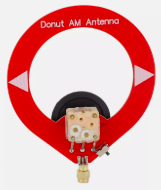
This is called Magnetic Coupling: when a circuit’s inductance and capacitance resonate, it maximizes energy transfer and selectively amplifies the desired frequency while rejecting others.
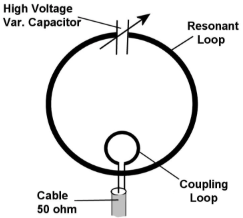
This type of antenna is very compact (excellent for low frequencies) and highly directional (minimally susceptible to interference or noise).
| CD | 10 to 20,000 Hz |
| FM | 20 to 15,000 Hz |
| AM | 50 to 7,000 Hz |
| Telephone | 200 to 3,400 Hz |
AM (Amplitude Modulation)
Since the AM modulation happens to be in amplitude, the bandwidth is narrow and can be identified as peaks in the FFT (Fast Fourier Transformation).
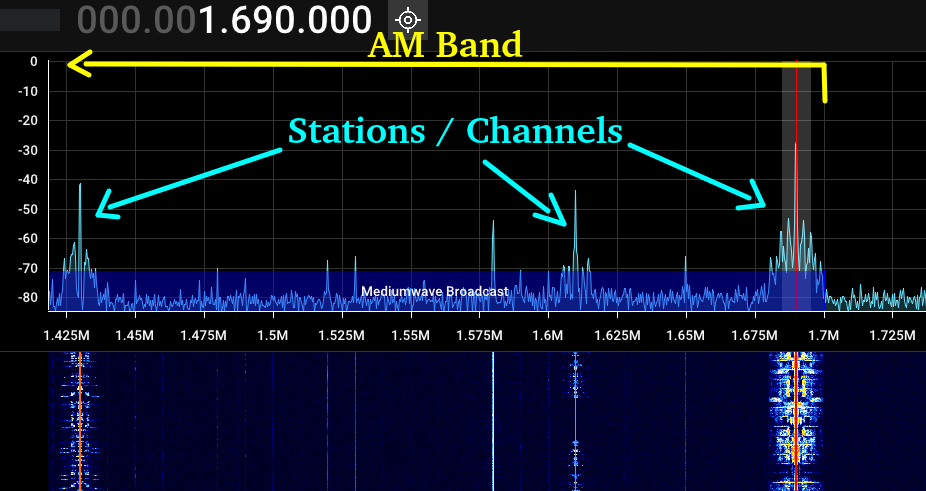
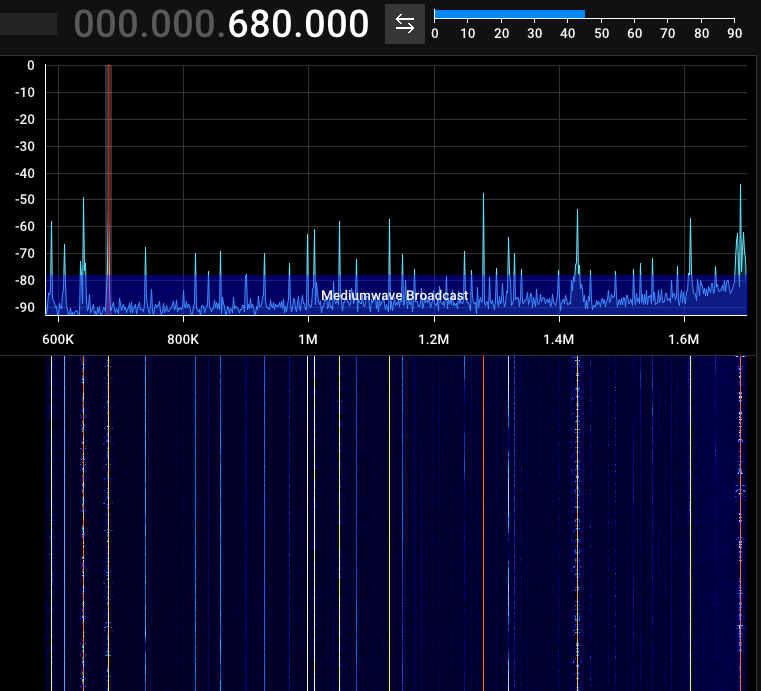
FM (Frequency Modulation)
Normal Bandwidth
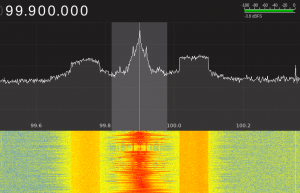
Wide Bandwidth
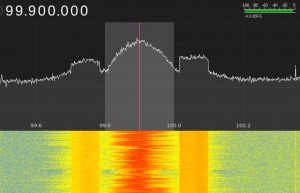
Narrow Bandwidth
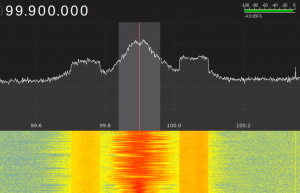
Multiple stations.
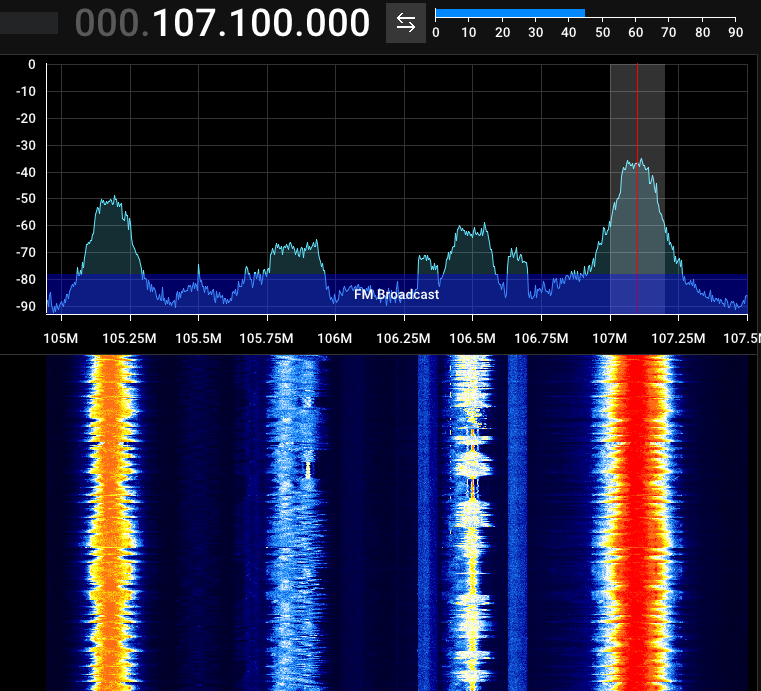
A 57 kHz subcarrier (phase-locked to the third harmonic of the stereo pilot tone) is used to carry a low-bandwidth digital Radio Data System (RDS) signal. Since it is only capable of transporting 1,187.5 bits per second, it is only suitable for text.
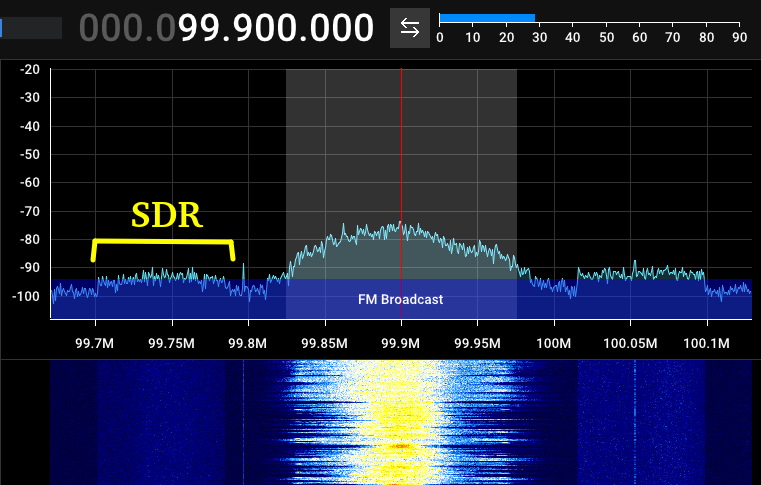
See more information about the type of information that RDS can carry at [Link].
VHF AIRBAND
Use a dipole antenna positioned vertically, and expand them to 60 cm each. Since dipole antennas are naturally half-wave antennas, each rod is equivalent to 1/4 of the wavelength.
This setup will match the ~125 MHz of the VHF band where the aviation communication happens.
It is easy to tune with AM or SSB, bandwidth of 5 kHz, and squelch will be your best friend to reduce the noise of the static when there is no transmission going on.

In another moment, I identified an aircraft transmitting what appeared to be silence in one carrier (#1), then alternating to another carrier (#2) when transmitting voice.
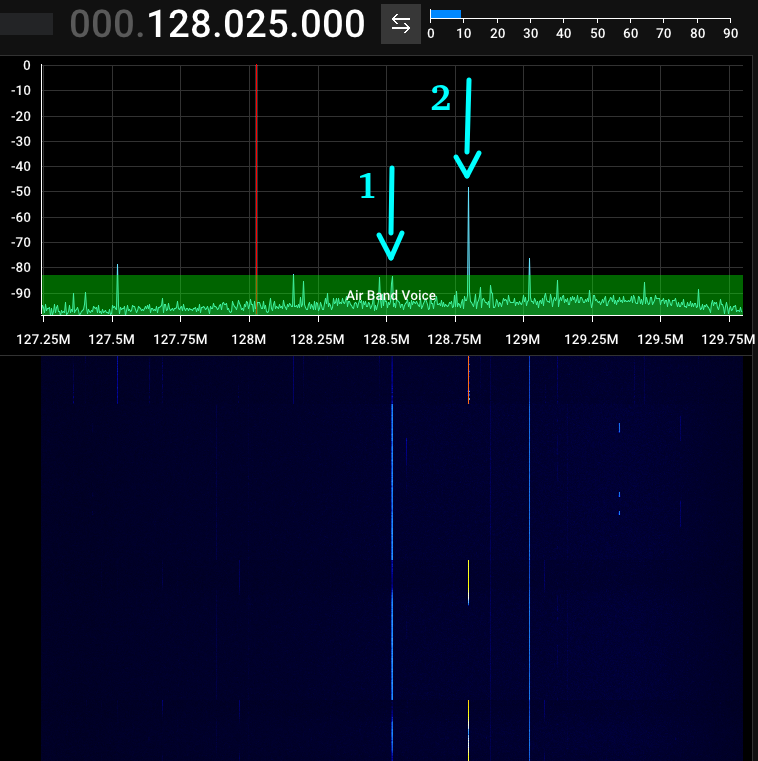
Transmissions are intermittent. Be patient and watch the waterfall for evidence of activity.
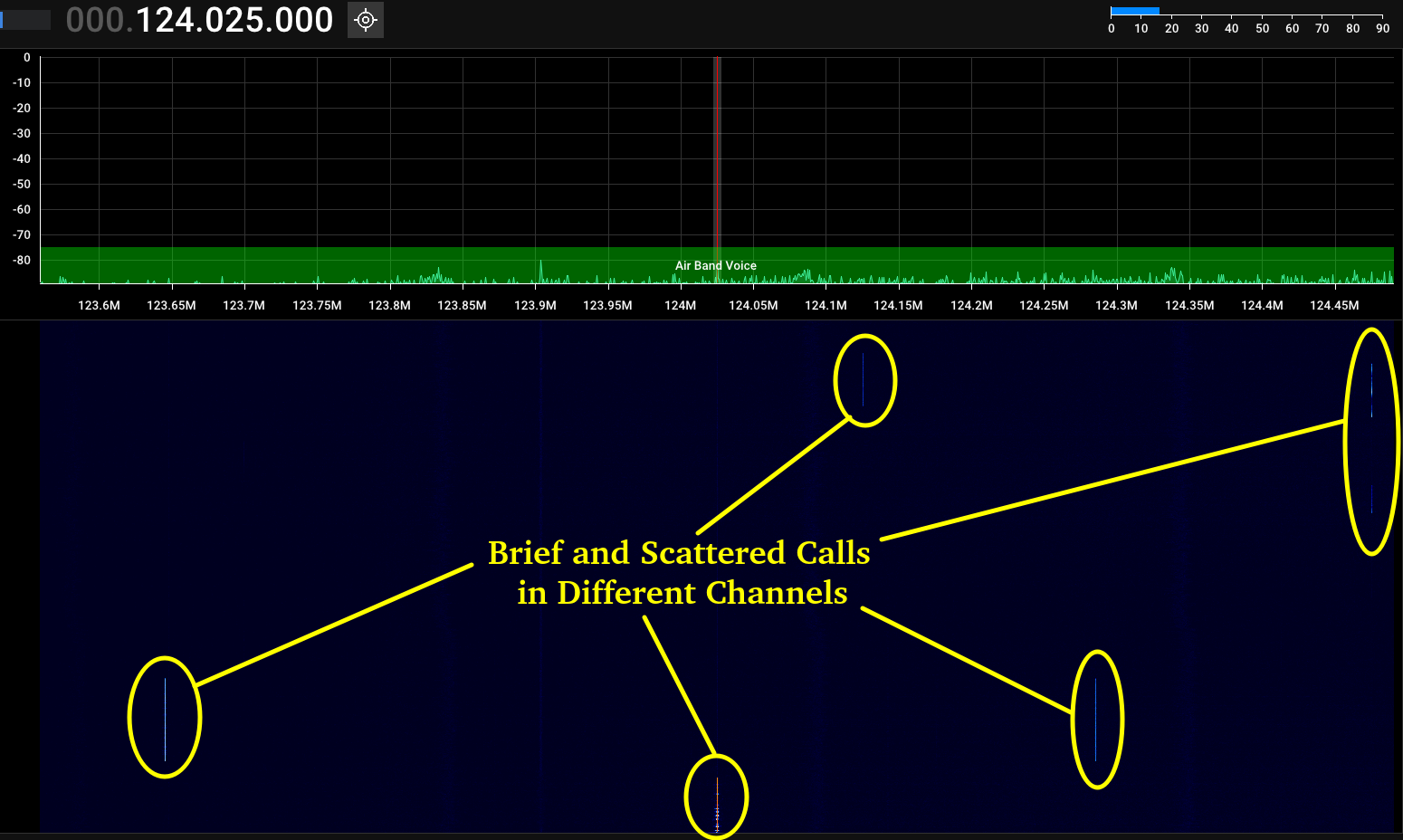
Some sources might even transmit simultaneously in multiple channels.
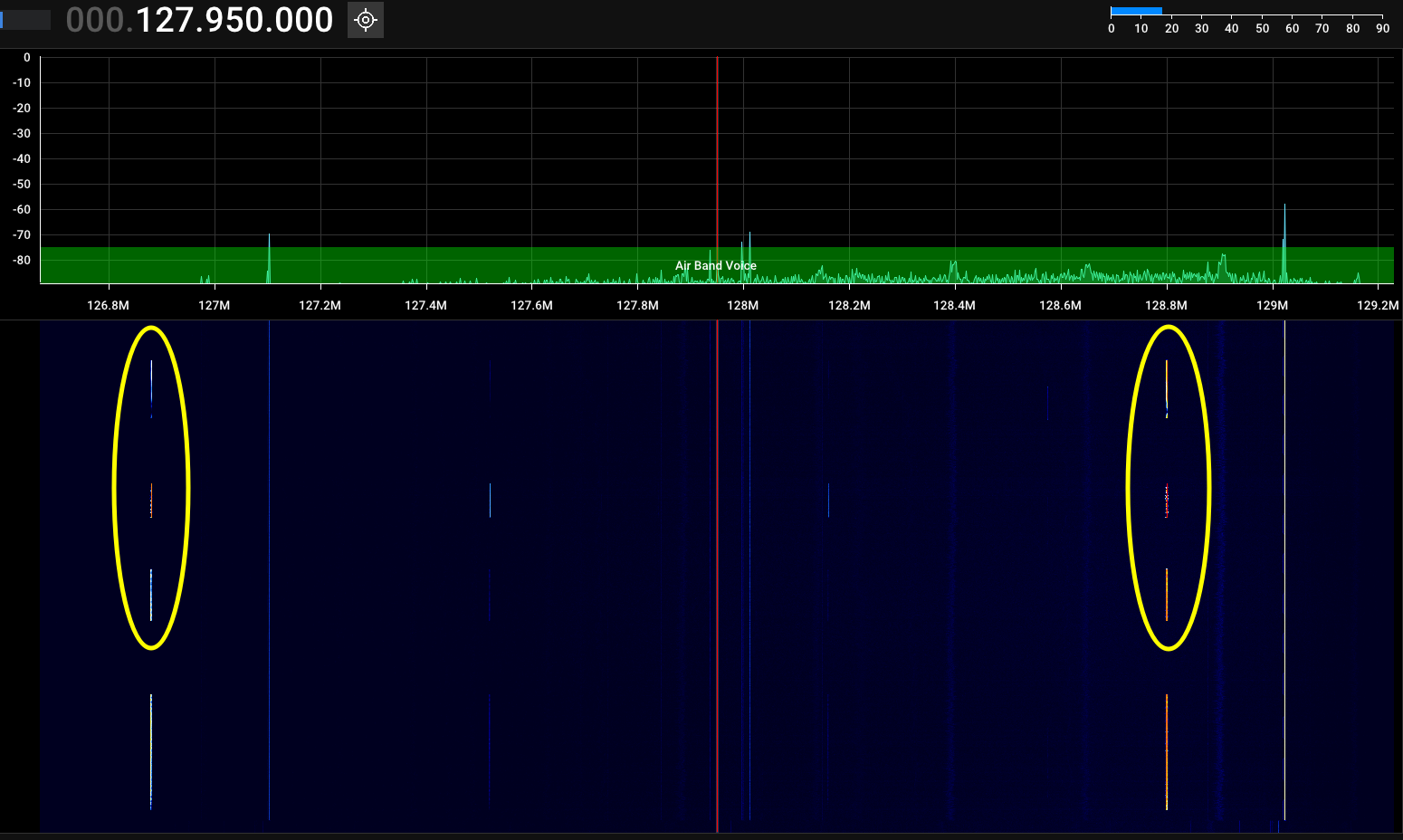
If you’re within an airport’s range, check for its Automatic Terminal Information Service (ATIS) frequency. ATIS is a 24/7 automated system that provides airport information to pilots. It helps confirm if you’re within range to communicate with the airport tower. If not, you may still hear one-way communication from approaching aircraft.
You may also notice short high-pitch transmissions on the air band which is called ACARS (Aircraft Communications Addressing and Reporting System). It is a digital communications system that aircraft use to send and receive short messages (telemetry).
Standard ACARS transmits globally at a frequency of 131.550 MHz but in some countries (Canada also uses 131.475 and 131.725 MHz), other frequencies may be used too. It is not hard to decode either.
Here is a sample file with a series of occurrences [Link].
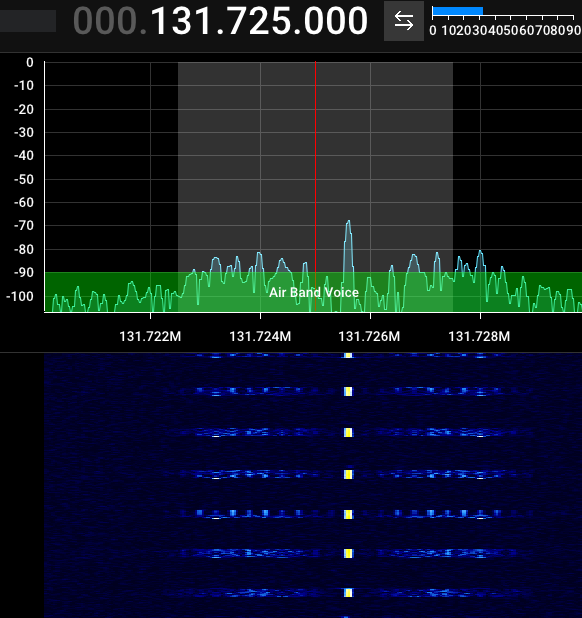
MARINE BAND
Used for voice communication from ship-to-ship and ship-to-shore with limited transmitter power to 25 watts, giving them a range of about 100 kilometers.
The telescopic antennas in the dipole should be 45 cm each. Target 156.8 MHz, set modulation to FM, and be patient because it might take a long while to see any activity.
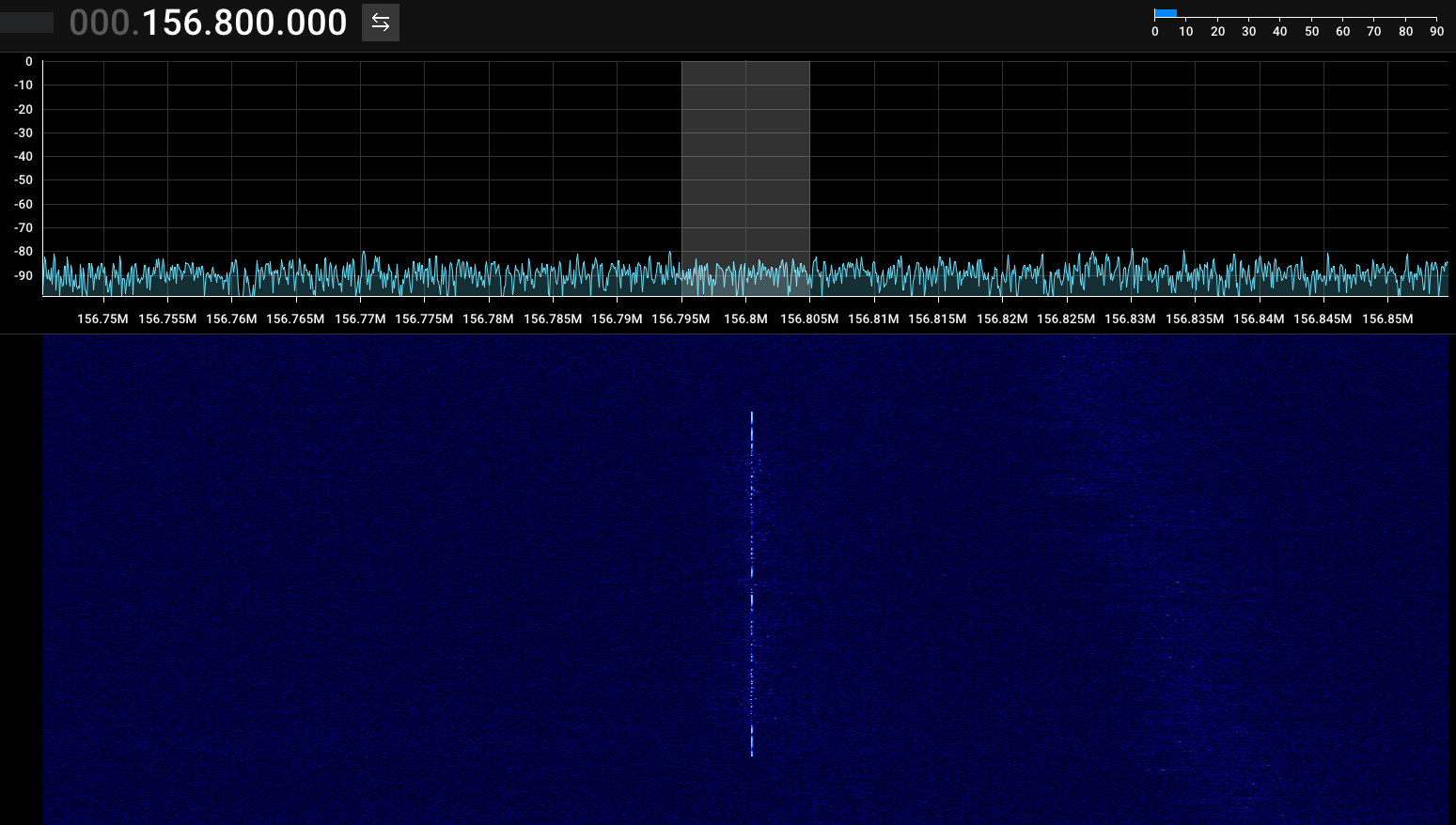
| CH | Ship Transmit (MHz) |
Ship Receive (MHz) |
Use |
|---|---|---|---|
| 1 | 156.050 | 160.650 | Public Correspondence, Port Operation |
| 2 | 156.100 | 160.700 | Public Correspondence, Port Operation |
| 3 | 156.150 | 160.750 | Public Correspondence, Port Operation |
| 4 | 156.200 | 160.800 | Public Correspondence, Port Operation |
| 5 | 156.250 | 160.850 | Public Correspondence, Port Operation |
| 16 | 156.800 | Distress, Safety, and Calling.
Ships required to carry radio, USCG, & most coast |
|
| 18 | 156.900 | 161.500 | Port Operation |
| 19 | 156.950 | 161.550 | Port Operation |
| 21 | 156.950 | 161.550 | Port Operation |
| 22 | 156.950 | 161.550 | Port Operation |
| 23 | 157.150 | 161.750 | Port Operation |
| 60 | 156.025 | 160.625 | Public Correspondence, Port Operation |
| 61 | 156.075 | 160.675 | Public Correspondence, Port Operation |
| 62 | 156.125 | 160.725 | Public Correspondence, Port Operation |
| 63 | 156.175 | 160.775 | Public Correspondence, Port Operation |
| 64 | 156.225 | 160.825 | Public Correspondence, Port Operation |
| 65 | 156.275 | 160.875 | Public Correspondence, Port Operation |
| 66 | 156.325 | 160.925 | Public Correspondence, Port Operation |
| 78 | 156.925 | 161.525 | Port Operation |
| 79 | 156.975 | 161.575 | Port Operation |
| 80 | 157.025 | 161.625 | Port Operation |
| 81 | 157.075 | 161.675 | Port Operation |
| 82 | 157.125 | 161.725 | Public Correspondence, Port Operation |
| 83 | 157.175 | 161.775 | Public Correspondence |
| 83 | 157.425 | 162.025 | Public Correspondence |
Check out the Full List of Channels [Link].
WEATHER RADIO
Not much different than tuning on a regular FM broadcast station but with a narrowband (NFM).
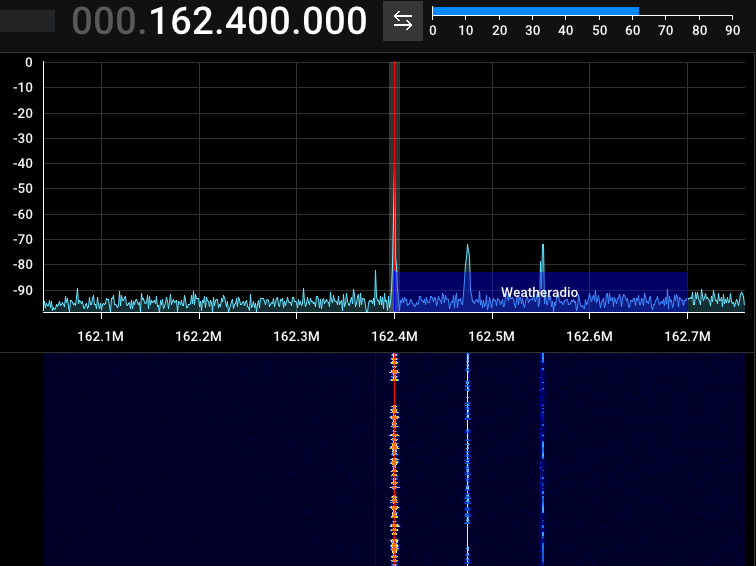
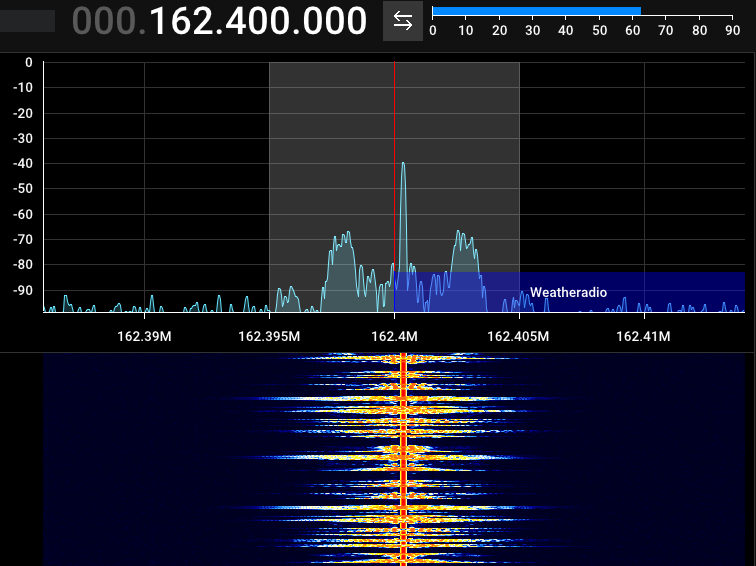
It appears to retransmit the same information in multiple frequencies.
TYPES OF MODULATION
FSK
This appears to be a regular 2-FSK that I captured the spectrum and waterfall images but could not decode.

The transmission is likely digital data. The lower frequency represents 0 and the higher represents 1, or vice-versa. It looks like it signals the end of transmission at a lower frequency.
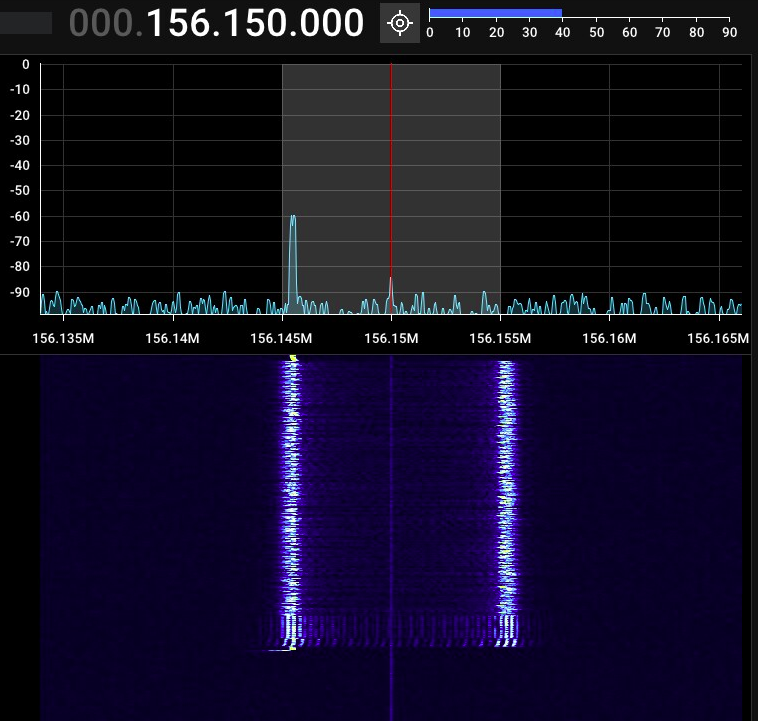
In comparison, a 4-FSK has four distinct peaks in the FFT. Each represents a digital value (0, 1, 2, or 3).
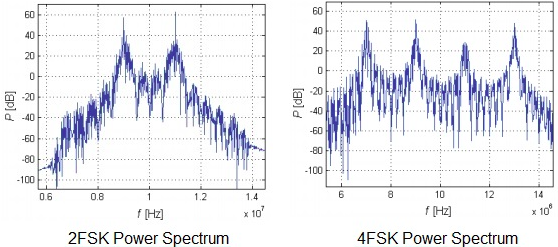
SEE ALSO
SDR Reference Guide [Link]
Linux Tools for SDR [Link]